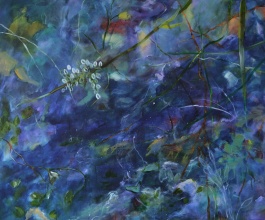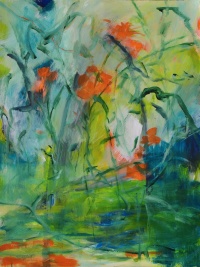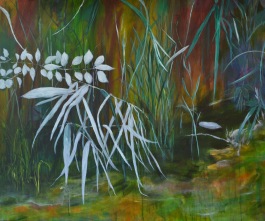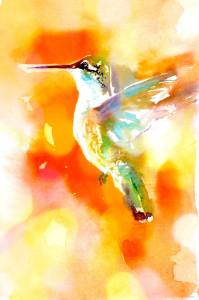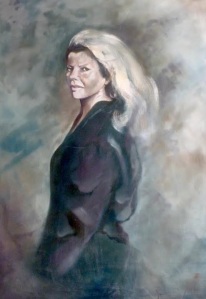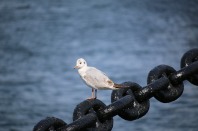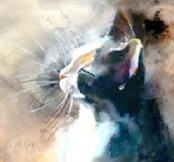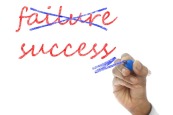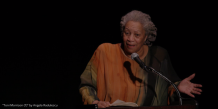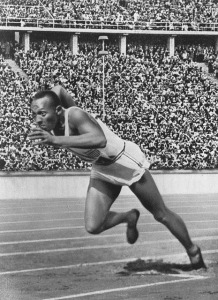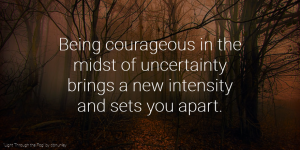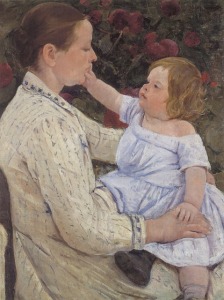This is my eighth post of quotations about creativity, creative people, and the creative process that I’ve assembled from my reading and writing. These quotes are valuable because writers, artists, photographers, and actors and other performers have expressed interest in them. They are interested in them because insights into creativity and the creative life can be applied to their work, bring them inspiration, and increase their knowledge and skills, enabling them to produce increasingly better, more sophisticated, and more popular work. That is an urge to improve and excel that animates almost every creative person from the first morning of the first day of their creative life to midnight of the last.
An important reason a creator hungers for information like this is the competitiveness of fields requiring inventiveness: painting is exceptionally competitive; writing and acting are too, and the creator is looking for an edge. Even one idea from these posts may lead to a creative breakthrough that strengthens the creator’s competitive position.
Persistence
The first thing a creator has to learn is not to quit. Have you thought of quitting? The majority of creators quit. They quit because they think no matter what they do they can’t succeed. But that can be overcome. The ideas in this post may help. What they need are new insights showing them that success comes from within a healthy, creative mind and is feasible for them. Then they have to also learn not to be mediocre. Most people don’t want to be mediocre, yet are perfectly satisfied to be mediocre-plus. The quotes may help you not to quit and not to be mediocre. A creator must learn to persist, and then persist more, persisting if need be beyond what seems human capability.
Naturally much is made of a creator’s talent. Thomas Wolfe said about the need to put your talent to use: “If a man has talent and can’t use it, he’s failed. If he uses only half of it, he has partly failed. If he uses the whole of it, he has succeeded, and won a satisfaction and triumph few men ever know.” Almost all people believe that talent is the reason for creative success. But persistence–the art of refusing to give up–may be more vital to a creator’s success than talent. Teachers of the arts often state that the students who will fare best in creative life are not the most gifted but the students who are the most determined to succeed. If they are persistent, less talented writers may have more works published and make more money than the more talented. The same is true of painters. American Jack London received 600 rejections before his first short story was published. He was not considered one of the great writers, but after the publication of that first story he became the most popular writer in the world within one year.
Enlightened creators are confident of themselves and possess what I call “inner skills” that not every creator possesses, returning again and again tirelessly, almost maniacally, to their work. They overcome sometimes enormous obstacles and difficulties that would deter less powerfully persistent people. Painter Pierre-August Renoir’s hands were crippled and rendered useless by severe rheumatoid arthritis and he was unable to paint with them late in his career. But with a strong will he produced some of his greatest works after that lying on his back, painting with the brush between his toes. Even without such extreme obstacles, creative work can be exceedingly difficult. When creative work “goes painfully, when it’s hideously difficult, and one feels real despair (ah, the despair, silly as it is, is real!)–then naturally one ought to continue with the work; it would be cowardly to retreat” (Joyce Carol Oates).
If you are a creator with talent and persistence both, your prospects of success are excellent.
Intensity
Intense people are growing rare in this era. Something is weakening people. But creative people are different. They tend to live intensely, and have strong beliefs about their creative pursuits: “It is through art and through art only, that we realize our perfection; through art and art only that we can shield ourselves from the sordid perils of actual existence” (Oscar Wilde). That intensity of their emotions and sensitivities is a necessary part of their make-up. They think, feel, and imagine intensely. They are often overstimulated, and at any moment may be flooded with mystical waves of rapture and joy with a sense that every cell of their body is incredibly alive. “So far as the artist is concerned, the unlimited extent of human experience is not so important for him as the depth and intensity with which he experiences things” (Thomas Wolfe). “It is evident that a faith in their vocation, mystical in intensity, sustains poets. There can really be no greater faith than the confidence that one is doing one’s utmost to fulfill one’s high vocation” (Stephen Spender). The creator has to learn to harness that intensity and aim it to producing quality works.
Creators must have a hunger to experience, to feel deeply, to know, to self-disclose, sharing what they have learned, felt, seen, and heard with anyone who is interested. “The meaningful difference intellectually between one painter or writer or one actor or director and another is simply the number of things they are intrigued by in a square yard of their experience and the urgency of their hunger to express them”(David J. Rogers).
Risk-Taking
Creative works do not come cheap. In order to produce them, creative people, once as ordinary as dishwater, must reshape themselves and not be afraid to branch out into the insecure, the anxious, and the unknown, risking, daring. For the creator risk-taking is not fool-hardiness. It is essential. On what is a memorable creator’s life based if not taking chances because life is short, time is fleeting, and an art that burns inside the artist must be expressed or it will extinguish into nothing. Can you feel it: that hunch igniting your spirit that there is a passion there that has appeared in your writer’s, painter’s, or composer’s life that must be pursued to its conclusion no matter the cost to your time, personal life, or peace of mind? Picasso said that “one must act in painting, as in life, directly.”
Identifying Creativity
How can you tell if you are creative? The pursuit of ways to identify creative people has led to scores of tests. But it has not been possible to demonstrate that creativity tests are valid. “High scores on a creativity test do not signal that one is necessarily creative in one’s actual vocation or avocation: (Howard Gardner). The answer is in the work: Is it original? Does it have a use? Do your artistic peers and the public agree that it is creative? If so, it is creative and having produced it, so are you.
Life of Creators
Generally, creators’ childhoods have more impact on their creativity than any other period of their lives. “Early in life, the creator generally discovers an area or object of interest that is consuming” (Howard Gardner). Author John Updike said that nothing that happens to you after the age of twenty is worth writing about. If you knew in childhood what you loved doing and were relatively sure what you would be when you grew up, you were more likely than most people to be creative as an adult.
The creator’s life, being hard, is not suited to everyone. To succeed you have to be an exception from the norm. To become highly skilled in creative works takes many years of hard work that only a minority of people are equipped for. “The sheer labor of preparing technically for creative work, consciously acquiring the requisite knowledge of a medium and skill in its use, is extensive and arduous even to repel many from achievement” (Brewster Ghiselin). “Writing a book is a horrible, exhausting struggle, like a long bout of some painful illness. One would never undertake such a thing if one were not driven on by some demon one can never resist or understand” (George Orwell).
To live the life of an artist appeals to millions of people, many envious of artists who they think lead “glamorous, exciting” lives. But that life is especially difficult in ways that other lives are not. “The artist’s life cannot be otherwise than full of conflicts…There are hardly any exceptions to the rule that a person must pay dearly for the divine gift of the creative fire” (Carl Gustave Jung).
To accomplish something noteworthy in art requires that you sacrifice at least one other important activity, person, or goal. The hard and fast rule is: to get, you must give up. “A special ability means a heavy expenditure of energy in a particular direction, with a consequent drain from some other side of life” (Carl Gustav Jung). The artist must take time and think very carefully and decide what he/she is willing to give up. What shall it be–this or that?
Influences on Creative Output
Memory is the most significant key to the creator’s gifts. “The poet above all else is a person who never forgets certain sense impressions which he has experienced and which he can re-live again and again as though with all their original freshness…There is nothing we imagine which we do not already know… And our ability to imagine is our ability to remember what we have already experienced and to apply it to some different situation” (Stephen Spender). All creators in any of the arts and sciences possess this kind of memory.
Creative works are the products of the whole person: intelligence and courage, talents and commitments, and unceasing energy: “It is not what the artist does that counts, but what he is…What interests me is the uneasiness of Cezanne, the real teaching of Cezanne, the torment of van Gogh, that is to say the drama of the man” (Pablo Picasso). “I don’t care who the artist is, if you study him deeply, sincerely, detachedly, you will find that he and his work are one” (Henry Miller).
Creative Vision
Many artistic creations are a result of the creator playing with new possibilities that disregard and shatter society’s sometimes restrictive rules of decorum, conformity, and political correctness. Doing that may lead to a kind of liberation: Novelist Henry Miller wrote, “The world would only begin to get something of value from me the moment I stopped being a serious member of society and became…myself.”
The creator must never sacrifice his or her own vision, or water it down for the sake of acceptance, whatever the opposition to it or how out of the ordinary it may be, and must never be intimidated by anyone, or live in fear of anything for even a moment.
The artist whose beautiful work is featured in this post is Karin Goeppert (www.karingoeppert.com). She says, “Life is a largely subjective experience; but that subjective experience is my bridge to the objective world. And it’s this synthesis of the two that I am trying to capture.” She says of her inspiration and process: “I love experimenting and want to give my works an individual expression. Most of my works are abstracted from nature but I also do non-objective paintings. I am inspired by the beauty and power of natural phenomena, the mystery of nature, its colors and forms. Every painting is a one-of-a-kind work in which I try to combine feeling and thought.”
© 2018 David J. Rogers
For my interview from the international teleconference with Ben Dean about Fighting to Win, click on the following link:
Order Fighting to Win: Samurai Techniques for Your Work and Life eBook by David J. Rogers
or
Order Waging Business Warfare: Lessons From the Military Masters in Achieving Competitive Superiority
or
